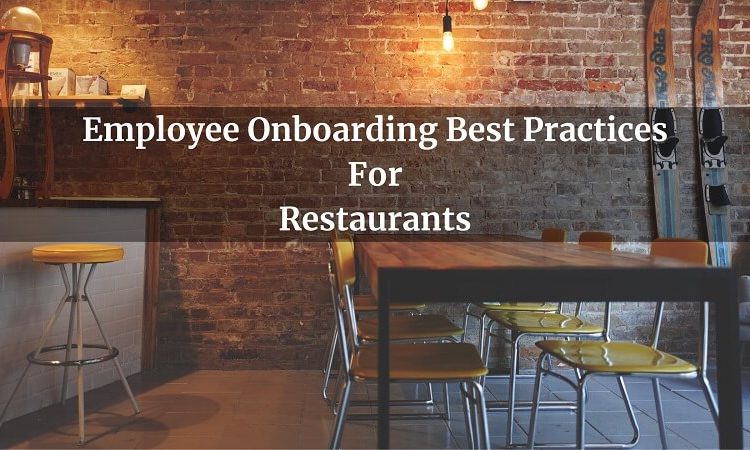Employee Onboarding Best Practices For Restaurants

If you’ve ever worked in a restaurant, you’ll know that it can often feel like a revolving door of staff. Compared to other businesses, the restaurant industry is hiring at an extraordinary rate. Hiring managers must pay greater attention to the restaurant onboarding process if recruits are to perform effectively and remain satisfied in their positions. Strategic onboarding is essential for combating expensive and disruptive employee turnover. This piece will look at employee onboarding best practices for restaurants. But first, let’s go through the basics of the restaurant onboarding procedure.
What Is Employee Onboarding?
Employee onboarding is introducing new employees to your company to teach new hires how to execute their roles properly. Typically, it consists of an orientation, documentation, and training. However, for your restaurant to run effectively, it is vital to put in place some of the employee onboarding best practices for restaurants, such as:
Onboarding Overview
Let your recruits know what to expect from the onboarding process before it begins. It would help if you offered them an outline of what they will learn and achieve during the onboarding process and how long it will take.
After they have accepted your employment offer, you may give them an onboarding summary through email, or if you are conducting onboarding online, you can live chat with your new recruits about what they can expect during the onboarding process.
This will assist in better preparing new workers for orientation and training by providing an overview of their onboarding program.
Culture Training
Employee turnover costs the restaurant sector a lot of money, so establishing a good team culture is critical to lowering turnover, making it an essential aspect of the onboarding process. Embracing business culture is a crucial factor in inspiring staff creativity and productivity. As a result, a terrible culture causes employees to quit. It would help if you educated your new workers on what it means to be a team member; this will make them feel appreciated and increase their motivation to stay.
For example, show a presentation during orientation that goes through the major elements of your restaurant’s culture and explains how you demonstrate these beliefs at work. Furthermore, you may offer an online quiz program where new workers can ask questions about your restaurant’s culture.
Provide New Employees With Mentors
Partnering your new team members with mentors or companions will help them feel more at ease while they learn the ropes. This will allow them to learn quickly by asking questions they may not have asked the managers, and you will prepare them for long-term success in the process.
It is vital to link new personnel with a mentor who is experienced in their jobs and articulates and demonstrates how things are done. Encourage recruits to ask their mentors questions to help them learn faster, and following training, have them shadow their pals.
Communicate Customer Service Expectations
Considering customer service is the foundation of every successful restaurant; it is vital to understand how team members should interact throughout shifts and after hours. To avoid disagreement, you must establish clear expectations.
For example, create role-playing opportunities that expose new staff to potentially challenging client interactions. Allow new employees to shadow tenured staff who provide exceptional customer service to see expectations.
Give Health and Safety Instructions
Certification in health and safety has long been necessary for the restaurant sector. Food safety keeps visitors safe from foodborne diseases and supports the establishment’s opening. It also ensures that you conform with your local Board of Health. Make sure to educate both the front and back of the house personnel on adequate cleanliness standards for their positions and how to handle food correctly.
Scheduling Procedures
Each restaurant has a different system for arranging shifts; so take your time with this aspect of the onboarding process. Use this opportunity to set goals for when new employees will be operating and to explain what transpires throughout each shift.
Provide Helpful Feedback
Finally, from the start, offer them frequent feedback. This will allow them to stop wondering if they are completing their job appropriately while providing them with a path for improvement.
Conclusion
Along with the previously stated employee onboarding techniques; you must make your onboarding process relevant to your employee’s task and position in your restaurant. Most importantly, ensure that your hiring process and procedures acquaint your new hire with the team.

